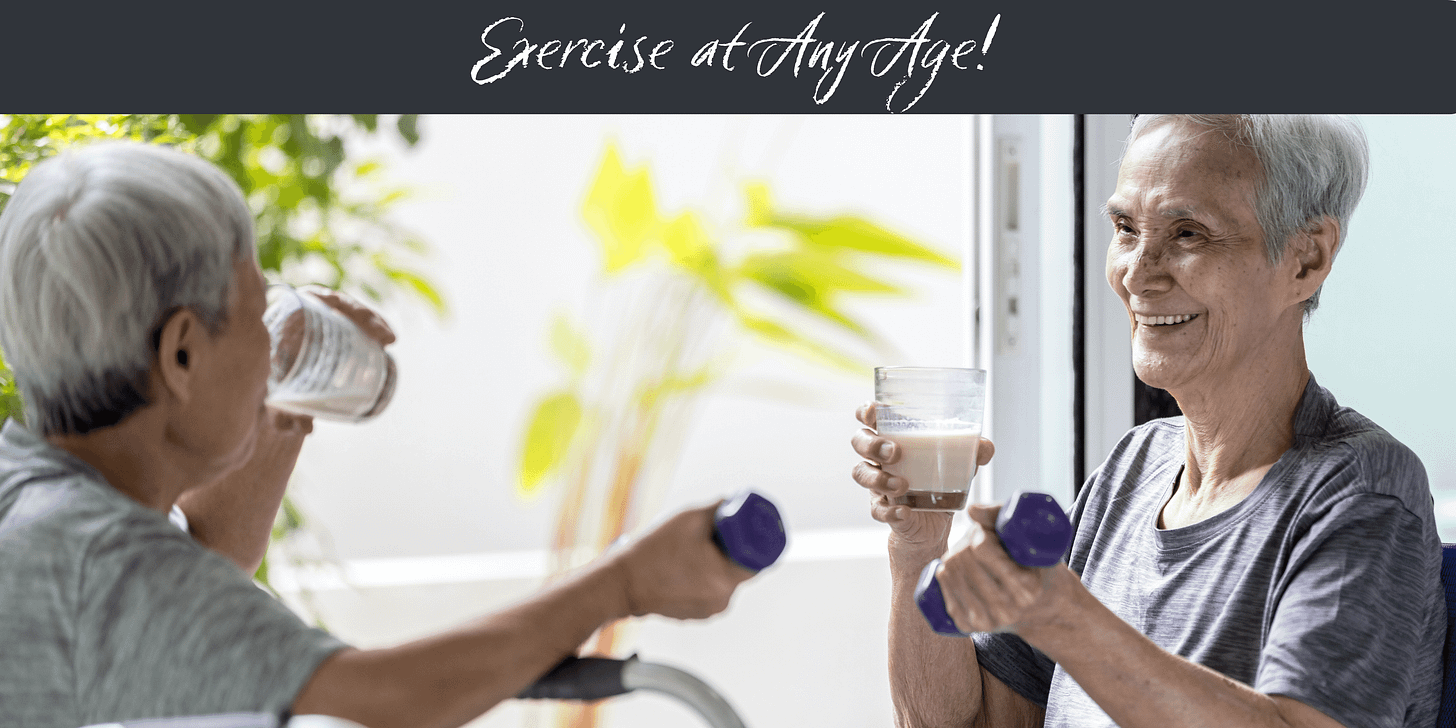Revitalizing the Elderly: A Breakthrough Study on Exercise Intervention for Frail Nonagenarians
We explain how a study shows that exercise is necessary even if you are 90 years old!
In a groundbreaking study conducted in the Pamplona area of Spain, researchers have discovered that a 12-week exercise intervention program can significantly improve the physical strength, balance, and overall well-being of frail nonagenarians (people aged 90 and above). The study's findings offer hope for enhancing the quality of life for the elderly, particularly those living in institutionalized settings.
The study involved 32 elderly participants who met the criteria for frailty, including symptoms such as slowness, weakness, weight loss, exhaustion, and low physical activity. The participants were divided into two groups: an exercise group and a control group.
The exercise intervention consisted of high-speed resistance training, balance, and gait exercises. The program lasted for 12 weeks, and the participants were assessed for various functional outcomes, muscle strength, and muscle mass.
How They Did It
Functional Outcomes and Gait Ability:
5-m Habitual Gait Test: Participants walked 5 meters at their normal speed.
Time-Up-and-Go (TUG) Test: This involved standing from a chair, walking 3 meters, turning around, walking back, and sitting down again.
Dual-Task Performance: During the 5-m habitual gait and TUG tests, participants were asked to perform verbal or arithmetic tasks, such as naming animals or counting backward from 100.
Balance Tests (FICSIT-4): These included various static balance tests like parallel, semitandem, tandem, and one-legged stance tests.
Rise from a Chair Test: Participants were timed to see how many times they could rise from a chair in 30 seconds.
Assessment of Falls:
Incidence of Falls: Information on falls was collected through questionnaires, with falls defined as unintentional resting on objects or the floor.
Assessment of Functional Status:
Barthel Index (BI): An international tool used to measure disability, ranging from 100 (complete independence) to 0 (severe disability).
Muscle Strength and Power:
Isometric Strength Measurement: Strength in the upper (right hand grip) and lower limbs (right knee extensors and hip flexors) was measured using a manual dynamometer.
Maximal Dynamic Strength (1RM Test): This was assessed in the bilateral leg press and bench press exercises, with the maximal load determined in no more than five attempts.
Maximal Power Measurement: Participants performed three repetitions at maximal velocity at intensities of 30% and 60% of 1RM to determine maximal power. The velocity was recorded using a transducer connected to the weight plates.
Motivational Support:
Verbal Encouragement: Strong verbal encouragement was provided to motivate participants to perform each test action as maximally and rapidly as possible.
These exercises and assessments were designed to provide a comprehensive evaluation of the participants' physical abilities, including their strength, balance, mobility, and functional status. They represent a mix of standard clinical tests and more specialized measurements tailored to the study's focus on frail nonagenarians.
What's the Big Deal About Helping Old Folks Exercise?
1. Getting Stronger and Moving Better: The study found that a 12-week exercise program helped very old people (90 years and above) get stronger and move better. They could walk faster and get up from a chair more easily. This is a big deal because it means they can do more things on their own.
2. Thinking and Walking at the Same Time: The researchers also looked at how well people could walk while doing something else, like counting backward or naming animals. This is called "dual-task walking," and it's a way to see how well the brain and body work together. The exercise program helped people do this better, too.
3. Less Falling Down: Falling can be really dangerous for old people. The study found that the exercise program helped reduce the number of falls. This could mean fewer injuries and a better quality of life.
4. Better Muscles: The study also looked at the muscles in the legs. They found that the exercise program not only made the muscles bigger but also improved their quality. This means the muscles were healthier and worked better.
Control Group Observations: In contrast, the control group showed decreases in some areas, such as gait velocity and isometric hand grip and knee extension strength.
What Does It All Mean?
The results of this study are exciting because they show that even very old people can get stronger and move better with the right exercise program. It's not just about living longer; it's about living better and being able to do more things on your own.
The study's findings demonstrate the potential of targeted exercise interventions to improve the physical and functional well-being of frail nonagenarians. The improvements in muscle strength, balance, and dual-task performance highlight the adaptability and resilience of the human body, even in advanced age.
Healthcare professionals, caregivers, and families can take inspiration from this study to develop tailored exercise programs for the elderly, promoting a more active and fulfilling life.
Note to Readers: The study was conducted according to the Declaration of Helsinki and approved by the local Institutional Review Board. The results are promising, but further research and individualized assessment are essential to apply these findings broadly.
---
The research article:
Cadore EL, Casas-Herrero A, Zambom-Ferraresi F, Idoate F, Millor N, Gómez M, Rodriguez-Mañas L, Izquierdo M. Multicomponent exercises including muscle power training enhance muscle mass, power output, and functional outcomes in institutionalized frail nonagenarians. Age (Dordr). 2014 Apr;36(2):773-85. doi: 10.1007/s11357-013-9586-z. Epub 2013 Sep 13. PMID: 24030238; PMCID: PMC4039263.



